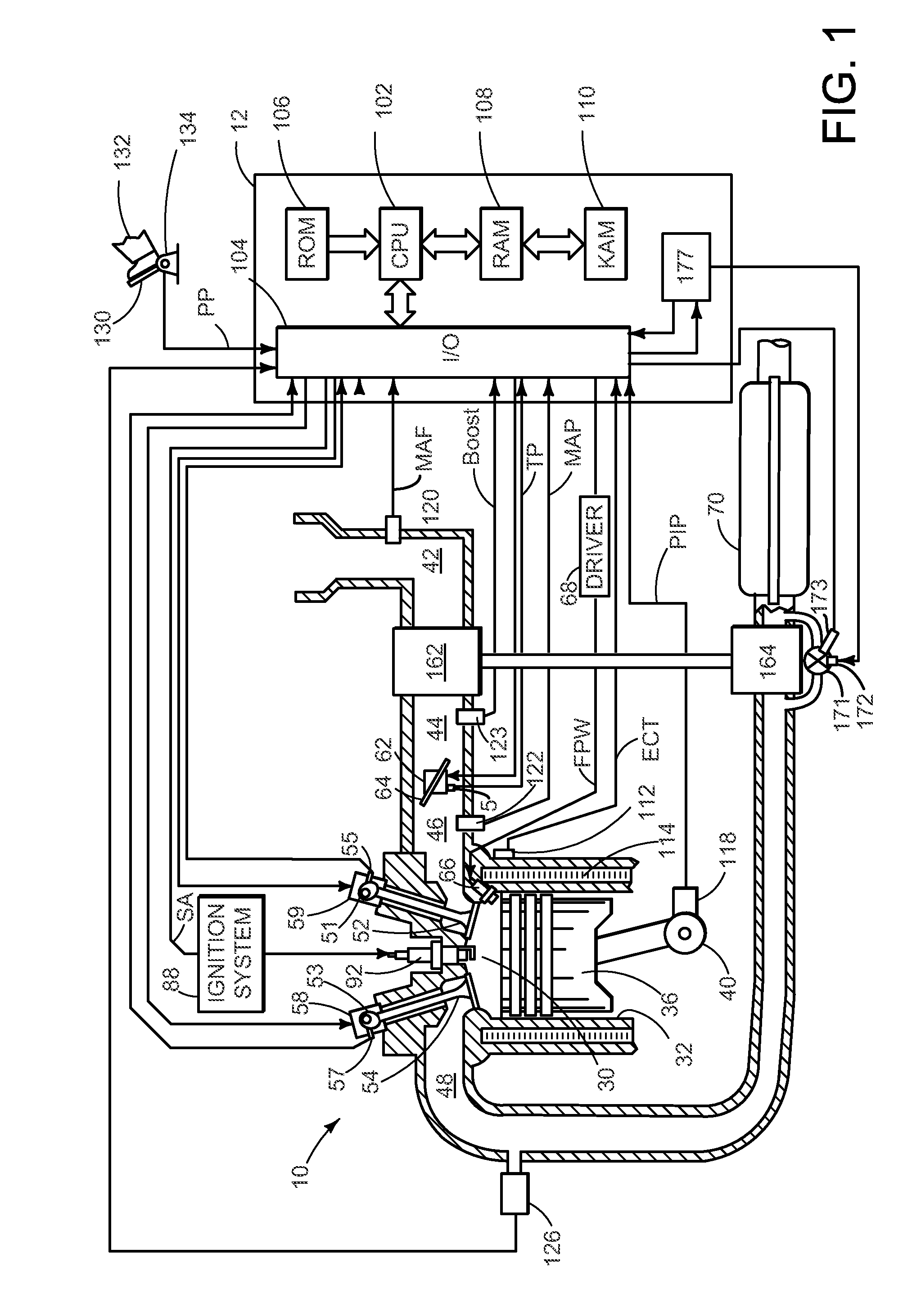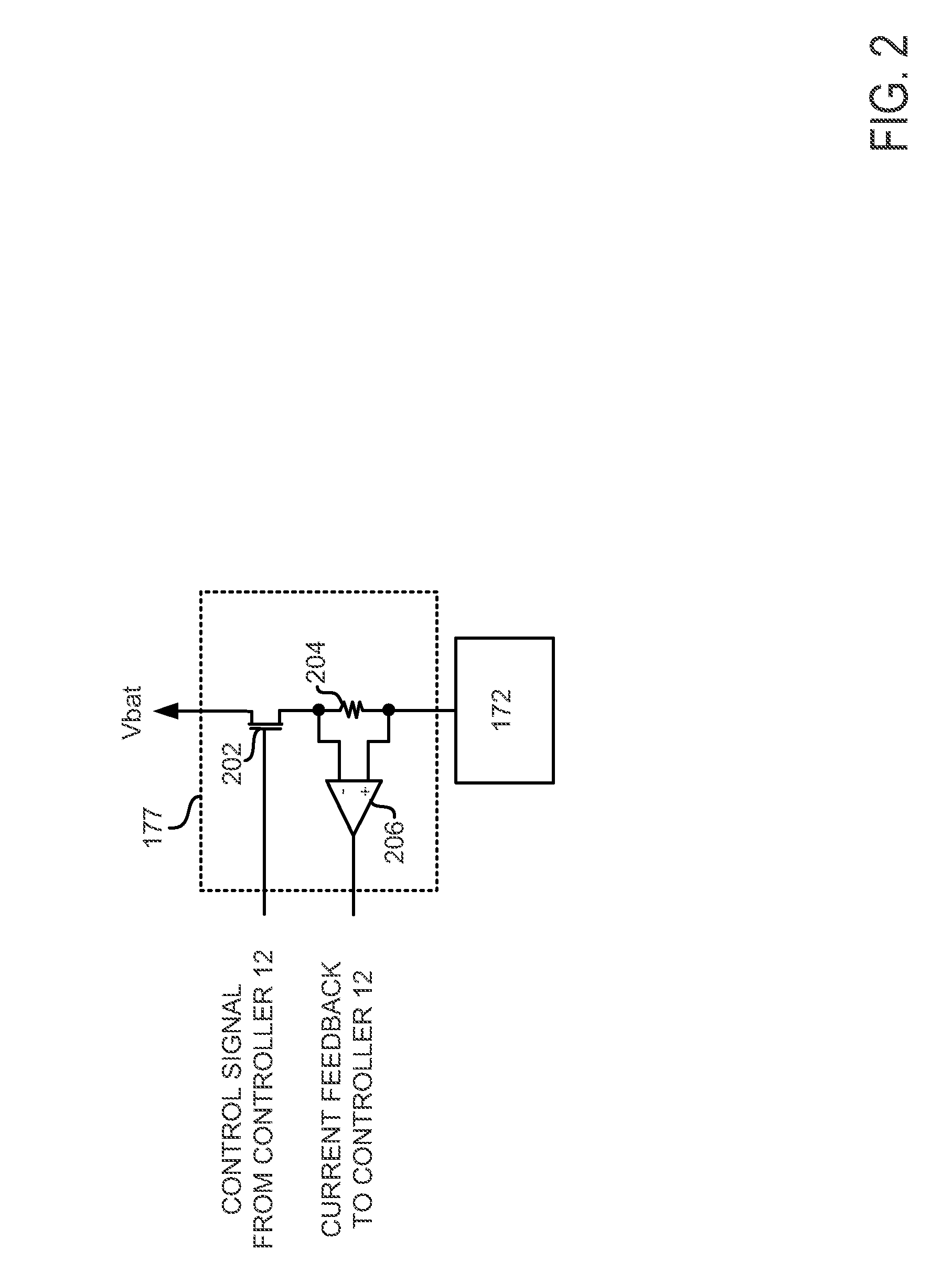Method for diagnosing an engine
a technology for engine operation and engine vaporization, which is applied in the direction of machines/engines, electrical control, lighting and heating apparatus, etc., can solve the problems of engine misfire, more difficult starting and operating the engine, and more difficult engine start-up and operation, so as to increase or decrease the vaporization of fuel within the engine, increase or decrease the effect of fuel vaporization
- Summary
- Abstract
- Description
- Claims
- Application Information
AI Technical Summary
Benefits of technology
Problems solved by technology
Method used
Image
Examples
Embodiment Construction
[0014]The present description is related to detecting and compensating for engine misfire. In one non-limiting example, the engine may be configured as illustrated in FIG. 1. The engine includes a turbocharger with a waste gate, and the waste gate includes a position sensor to determine a position of the waste gate. FIG. 2 shows an example circuit for determining an amount of current supplied to the waste gate when the waste gate is an electrically actuated waste gate. FIG. 3 shows an example sequence where waste gate position and / or current are a basis for determining engine misfire. Finally, FIG. 4 shows an example method for detecting and compensating engine misfire.
[0015]Referring to FIG. 1, internal combustion engine 10, comprising a plurality of cylinders, one cylinder of which is shown in FIG. 1, is controlled by electronic engine controller 12. Engine 10 includes combustion chamber 30 and cylinder walls 32 with piston 36 positioned therein and connected to crankshaft 40. Com...
PUM
 Login to View More
Login to View More Abstract
Description
Claims
Application Information
 Login to View More
Login to View More - R&D
- Intellectual Property
- Life Sciences
- Materials
- Tech Scout
- Unparalleled Data Quality
- Higher Quality Content
- 60% Fewer Hallucinations
Browse by: Latest US Patents, China's latest patents, Technical Efficacy Thesaurus, Application Domain, Technology Topic, Popular Technical Reports.
© 2025 PatSnap. All rights reserved.Legal|Privacy policy|Modern Slavery Act Transparency Statement|Sitemap|About US| Contact US: help@patsnap.com



